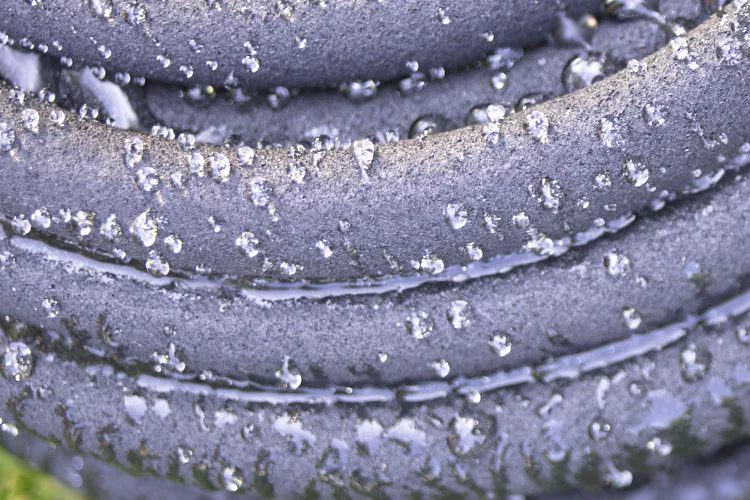Hand watering a garden takes a lot of time, and sprinkler systems lead to water waste and weed growth, but there are other options: drip irrigation and soaker hose systems.
When deciding to install drip irrigation vs. soaker hose systems, it pays to consider the features of each carefully so you pick the right option for your garden. Both save time, conserve water, reduce weeds, and eliminate fungal diseases like powdery mildew. However, each has pros and cons for watering vegetables, raised beds, and container gardens.
Pros and Cons of Drip Irrigation
Drip irrigation systems have become increasingly popular in recent years due to their ease of use and incredible water efficiency. These systems utilize a series of flexible tubes dotted with tiny holes or water emitters that direct a steady drip of water straight to plant roots. Useful for edible crops and ornamentals, drip irrigation can be used in small gardens or large plots, and it can be installed with a timer for fully automated watering.
Pros of Drip Irrigation
Versatile. Compared to soaker hoses, drip irrigation systems are much more versatile. By using flexible drip tubes and elbow connectors, drip irrigation lines can be directed into raised bed gardens or individual plant pots, installed around tree roots, or placed between rows of vegetables. Unlike soaker hoses, drip systems regulate pressure, so they can be used on large garden spaces and sloping hillsides.
Durable. Unlike soaker hoses, drip lines are much more resistant to UV damage and last for many seasons. The best choice for permanent installations, drip irrigation systems last about 10 to 15 years on average, although they can last even longer with proper care.
Repairable. Soaker hoses usually need to be replaced if they sustain damage, but drip systems can be repaired with splicing or plugs.
Precision watering. Drip systems can be fully customized with individual water emitters directed to specific plants or pots.
Efficient. While soaker hoses use less water than standard garden hoses and sprinkler systems, they aren’t as efficient as drip irrigation. If you want to conserve water, a drip irrigation system is the way to go.
Cons of Drip Irrigation
Cost. Drip irrigation systems have a higher initial startup cost than soaker hoses. However, because these systems are long-lasting and repairable, they can be worth the extra investment.
Emitter spacing. Drip tubes emit a consistent amount of water, but some drip lines have emitters that are spaced 6 inches or more apart. While this is unlikely to cause a problem if you’re growing large plants, seedlings growing further away from water emitters receive less water than seedlings grown directly beside emitters.
Installation. Installing drip irrigation can take more planning and time, although you’ll end up with a watering system that’s fully customized for your garden.
When to Use Drip Irrigation
Drip irrigation is the best watering system if you have a sloping or large garden with plants grown in multiple zones. Perfect for edibles and ornamentals, drip irrigation offers precision watering and can be used to water individual plants and container gardens. While drip irrigation systems have a higher initial cost, these systems last for years, are fully repairable, and are unbeatable when it comes to water conservation.
Pros and Cons of Soaker Hoses
Soaker hoses may look a lot like regular garden hoses, but these hose systems are made of a porous rubber or polyethylene material that slowly drips water along the entire hose length. Like drip irrigation, soaker hoses direct water to the soil line, eliminating overspray, keeping plant leaves dry, and reducing fungal diseases. An excellent choice for ornamentals and small garden spaces, soaker hoses are budget-friendly and easy to install.
Pros of Soaker Hoses
Quick install. Soaker hoses are simpler systems than drip irrigation systems, requiring little planning to install them. Position the soaker hose beneath the plants you want to irrigate and turn on the water.
Good for small spaces. Soaker hoses don’t take up much space; they can be used in small gardens or to ensure a prized rose bush or young tree stays hydrated.
Easy to move. Drip irrigation lines can be elaborate, and moving them is a chore while soaker hoses can be lifted like a regular garden hose and repositioned in other garden beds as needed.
Cons of Soaker Hoses
Less precise. Soaker hoses don’t have individual water emitters, so they can’t water plants as precisely as drip irrigation. This makes soaker hoses less useful for watering individual small plants and more likely to encourage weed growth.
Less efficient. Because soaker hoses emit water throughout their entire length, they take longer to deeply water garden beds. This makes these systems less water efficient than drip irrigation but still more efficient than sprinklers and hand watering.
Not as long-lasting. Soaker hoses are more susceptible to UV damage and can’t be easily repaired like drip irrigation lines. In general, soaker hoses usually last about one to three years, and then the entire hose must be replaced.
Some systems are not suitable for food crops. Some soaker hoses contain BPA and other materials you may not want to use around food crops. While these hoses are still suitable for ornamental gardens, read the soaker hose packaging carefully to ensure the hose you choose is safe for food crops.
Diminished pressure in large gardens. Soaker hoses work well in small gardens, but long lines of soaker hoses lose water pressure quickly, and they can’t be used to water large gardens. Soaker hoses are also ineffective on slopes.
When to Use Soaker Hoses
Soaker hoses are less useful for large gardens, slopes, and plants grown in containers, but they’re fine picks for small space gardens and watering specimen trees and other ornamentals. If cost is a concern or you don’t want to tangle with elaborate drip lines, soaker hoses may be your best option.




















